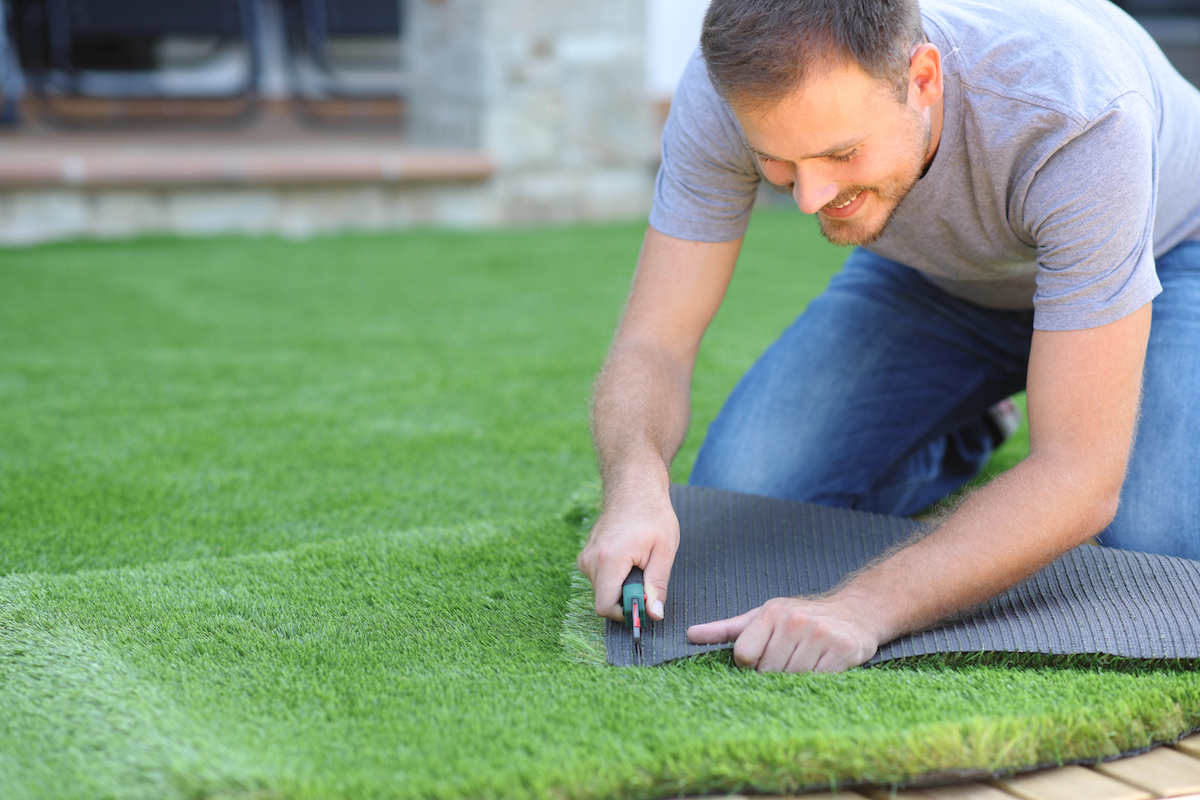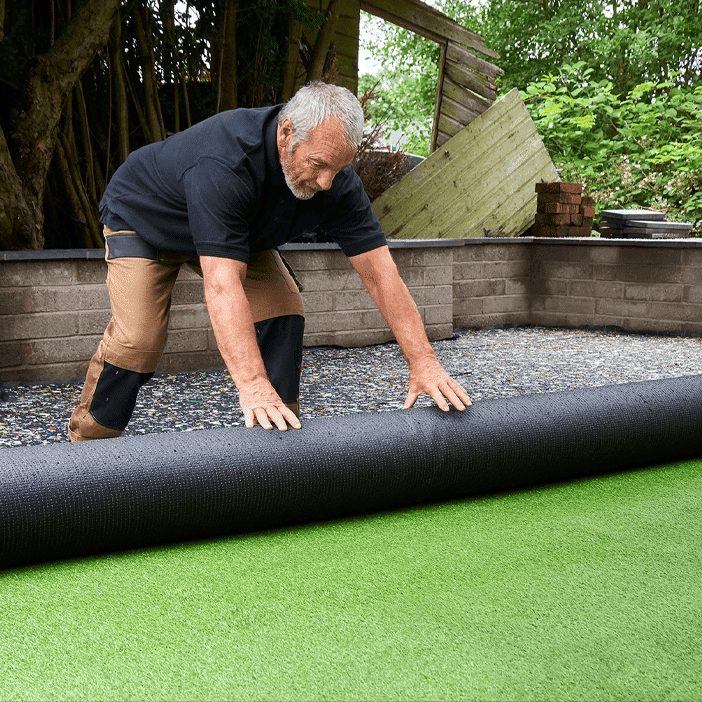Professional Arizona Turf Suppliers Ensuring a Realistic Lawn Option
Professional Arizona Turf Suppliers Ensuring a Realistic Lawn Option
Blog Article
Delve Into the Environmental Benefits of Opting for Artificial Grass Solutions
The adoption of man-made lawn options offers an engaging possibility to resolve pressing environmental difficulties. By significantly reducing water use and decreasing the application of harmful chemicals, these options not just advertise lasting landscaping but additionally protect regional ecosystems.
Water Preservation Perks
Among the most substantial benefits of synthetic grass is its capacity to preserve water. Typical grass yards call for significant irrigation, especially in locations prone to drought or water restrictions. In comparison, synthetic turf does not need watering, dramatically minimizing the overall need for water sources. This feature is especially valuable in arid regions where water shortage is a pressing problem.
By eliminating the demand for routine watering, artificial lawn adds to sustainable landscape methods and assists mitigate the ecological effect of too much water usage. The conservation of water prolongs to the decrease of drainage, which can lead to soil disintegration and waterway pollution.
Furthermore, the installation of synthetic turf enables property owners and communities to allocate water sources much more effectively, concentrating on necessary uses such as alcohol consumption water and farming. The change in the direction of synthetic grass not just advertises liable water usage but additionally straightens with more comprehensive environmental objectives focused on protecting natural deposits.
As communities increasingly prioritize sustainability, the water conservation advantages of man-made lawn provide a compelling situation for its fostering in business and household landscape design jobs.
Reduced Chemical Usage
The shift to synthetic grass significantly decreases the reliance on chemical therapies typically utilized in all-natural turf maintenance. Traditional turf monitoring commonly involves the application of herbicides, pesticides, and fertilizers to promote development and control parasites. These chemicals can posture risks to human health and wellness, neighborhood wild animals, and the atmosphere, contributing to dirt and water contamination.
In contrast, artificial grass gets rid of the need for these damaging materials. By minimizing the release of synthetic substances into the community, fabricated lawn promotes healthier dirt and water systems.
Furthermore, the absence of chemical overflow related to synthetic grass installations aids protect neighborhood rivers from contamination, supporting water life and keeping biodiversity. Arizona turf. As neighborhoods significantly prioritize sustainable practices, selecting artificial grass offers a feasible remedy that aligns with ecological conservation objectives. Through this change, homeowner can delight in lush eco-friendly areas without endangering environmental wellness, leading the way for an extra lasting future
Lower Carbon Impact

Moreover, the installment of man-made grass can result in significant water conservation. All-natural lawns need considerable amounts of water for watering, which not only contributes to the carbon impact related to water extraction click this and therapy but likewise stress neighborhood water resources. In comparison, synthetic grass needs marginal maintenance, needing no watering, consequently considerably minimizing water usage and its connected energy prices.
Furthermore, the durability of synthetic grass adds to its lower carbon effect. With a life-span of approximately 15 years or even more, the requirement for constant substitutes is reduced, resulting in less waste and lower energy consumption in manufacturing and taking care of conventional grass alternatives. In general, man-made lawn presents a lasting alternative for ecologically conscious landscaping.
Environment Preservation
Habitat preservation is a crucial factor to consider in the discussion over landscaping selections, particularly when comparing synthetic grass to all-natural grass. All-natural lawn yards often require substantial maintenance, consisting of the usage of plant foods, chemicals, and herbicides, which can detrimentally influence neighborhood ecological communities. These chemicals can seep into the soil and rivers, damaging indigenous flora and animals and interfering with neighborhood habitats.
On the other hand, synthetic grass offers a chance to decrease the environmental footprint of landscaping. By selecting artificial turf, property owners can minimize the disturbance of natural environments linked with typical grass care practices. Artificial grass removes the requirement for hazardous chemicals, thereby shielding close-by wild animals and keeping the stability of bordering ecosystems. The setup of fabricated turf can lead to the conversion of previous turf locations right into more biodiverse landscapes, such as pollinator gardens or native plant locations, which can sustain neighborhood wildlife.
Inevitably, the change to synthetic grass not only preserves water and lowers maintenance efforts but also fosters a much more unified partnership between human activities and the native environment, advertising habitat preservation while doing so.
Long-Term Sustainability
Long-lasting sustainability is an essential consider reviewing the advantages of synthetic grass over typical turf lawns. Among one this article of the most significant advantages of man-made turf is its sturdiness; it can last as much as 15-20 years with marginal maintenance, whereas all-natural yard needs frequent reseeding and replacement. This longevity decreases the demand for consistent sources, such as water, fertilizers, and chemicals, which are important for maintaining a healthy and balanced yard yard.
In addition, synthetic grass adds to a decrease in carbon discharges browse this site connected with lawn treatment tools. Typical yards typically call for gas-powered mowers, leaners, and blowers, all of which contribute to air contamination. Arizona turf. In contrast, artificial lawn eliminates the demand for such equipment, promoting a cleaner setting
Additionally, the manufacturing of synthetic grass progressively uses recycled materials, improving its sustainability account. As producers embrace environment-friendly techniques, the environmental impact of synthetic grass continues to reduce.

Final Thought
The fostering of synthetic grass services presents significant environmental advantages, including considerable water conservation, minimized dependence on unsafe chemicals, and a reduced carbon impact. Synthetic grass help in preserving all-natural habitats by reducing land disruption and advertising lasting sustainability with the usage of durable products. Jointly, these elements underscore the possibility of synthetic grass to add positively to ecological wellness and use a feasible alternative to traditional landscape design techniques in a significantly resource-conscious globe.
In contrast, fabricated grass does not need watering, considerably decreasing the total demand for water sources. By decreasing the release of artificial compounds right into the environment, synthetic lawn advertises much healthier soil and water systems.
Moreover, the setup of synthetic turf can result in significant water preservation. In comparison, synthetic turf requires very little maintenance, requiring no watering, thus significantly minimizing water use and its connected power costs.

Report this page